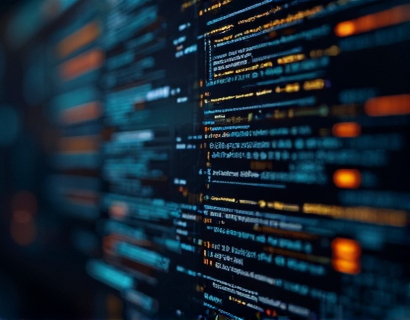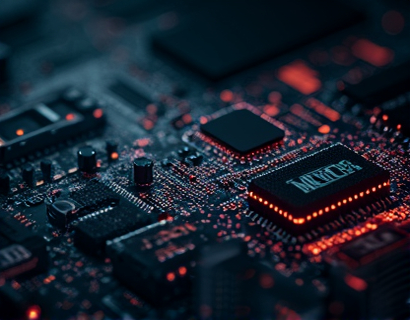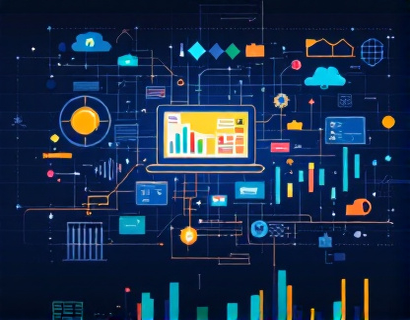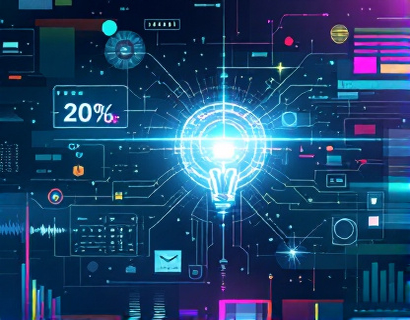Unlocking Scalability and Security: Cutting-Edge Layer 2 Solutions for EVM-Enabled Blockchain Development
In the rapidly evolving landscape of blockchain technology, EVM-enabled blockchains have emerged as a cornerstone for decentralized applications. However, as these applications grow in complexity and user base, scalability and security become paramount challenges. Layer 2 solutions offer a promising avenue to address these issues, enabling developers to unlock the full potential of EVM-based blockchain development. This article delves into the cutting-edge Layer 2 solutions that are revolutionizing scalability and security, providing developers with the tools to create faster, more secure, and cost-effective decentralized solutions.
Understanding Layer 2 Solutions
Layer 2 solutions refer to protocols and technologies built on top of the base blockchain (Layer 1) to enhance performance and reduce costs. These solutions do not alter the underlying blockchain but instead optimize the way transactions are processed and recorded. For EVM-enabled blockchains, Layer 2 solutions can significantly improve transaction throughput, reduce gas fees, and enhance overall user experience.
Key Benefits of Layer 2 Solutions
The primary advantages of implementing Layer 2 solutions in EVM-based blockchain development include:
- Increased Scalability: Layer 2 solutions can handle a higher volume of transactions per second, addressing the scalability limitations of Layer 1 blockchains.
- Lower Costs: By offloading some of the transaction processing to Layer 2, gas fees are reduced, making blockchain applications more accessible and cost-effective.
- Enhanced Security: Advanced cryptographic techniques and redundancy in Layer 2 solutions can improve the security of transactions and smart contracts.
- Faster Transaction Times: Layer 2 solutions can process transactions almost instantaneously, compared to the sometimes lengthy confirmation times on Layer 1.
Popular Layer 2 Solutions for EVM Blockchains
Several Layer 2 solutions have gained prominence for their effectiveness in enhancing EVM-based blockchain development. Some of the most notable ones include:
Optimistic Rollups
Optimistic Rollups bundle multiple transactions into a single transaction on the main chain, significantly reducing the load on the network. This approach assumes that the transactions are valid and only challenges the batch if fraud is detected. By minimizing the data sent to the main chain, Optimistic Rollups achieve high throughput and low fees while maintaining strong security guarantees.
Zero-Knowledge Rollups
Zero-Knowledge Rollups leverage zk-Rollups, which use zk-SNARKs (Zero-Knowledge Succinct Non-Interactive Arguments of Knowledge) to create succinct proofs of transaction validity. This method ensures that the main chain only verifies the final result, rather than each individual transaction, leading to even higher scalability and lower costs. Zero-Knowledge Rollups offer unparalleled efficiency and security, making them ideal for high-volume applications.
Sidechains
Sidechains are separate blockchains that are linked to the main EVM blockchain, allowing for parallel transaction processing. They can operate with different consensus mechanisms and rules, providing flexibility and optimization for specific use cases. Sidechains can significantly enhance scalability by handling a large portion of the network's transactions off the main chain.
State Channels
State Channels enable multiple parties to conduct a series of transactions off the main chain, with the final state being settled on the blockchain. This approach is particularly useful for applications requiring frequent and fast transactions, such as gaming and decentralized finance (DeFi). State Channels minimize the number of transactions on the main chain, reducing fees and improving performance.
Implementing Layer 2 Solutions in EVM Development
For developers looking to integrate Layer 2 solutions into their EVM-based projects, several steps and considerations are essential:
First, it's crucial to identify the specific needs and goals of the application. Different Layer 2 solutions excel in various scenarios, so selecting the right one is vital. For instance, Optimistic Rollups might be suitable for applications with moderate transaction volumes and a need for strong security, while Zero-Knowledge Rollups are ideal for high-throughput, low-fee applications.
Next, developers should familiarize themselves with the technical requirements and integration processes of the chosen Layer 2 solution. This includes understanding the interaction between the Layer 2 protocol and the EVM, as well as the necessary smart contract modifications. Community support, documentation, and testing frameworks can greatly facilitate this process.
Security is a paramount concern when implementing Layer 2 solutions. Developers must thoroughly audit the integration to ensure that no vulnerabilities are introduced. Utilizing established and well-vetted protocols and libraries can help mitigate security risks. Additionally, continuous monitoring and updating of the Layer 2 layer are essential to address any emerging threats.
Case Studies and Real-World Applications
Several projects have successfully leveraged Layer 2 solutions to enhance their EVM-based blockchain applications. For example, a decentralized finance platform implemented Optimistic Rollups to reduce transaction fees and increase processing speed, resulting in a more seamless user experience and higher adoption rates. Another project used Zero-Knowledge Rollups for a complex DeFi application, achieving unprecedented transaction throughput while maintaining robust security.
These case studies demonstrate the practical benefits of Layer 2 solutions in real-world scenarios, highlighting their potential to transform the blockchain landscape.
Future Trends and Innovations
The Layer 2 ecosystem is rapidly evolving, with ongoing research and development pushing the boundaries of what's possible. Some emerging trends include:
- Interoperability between different Layer 2 solutions and blockchains, enabling seamless cross-chain transactions and applications.
- Enhanced user interfaces and tools to simplify the integration and management of Layer 2 protocols for developers.
- Integration of Layer 2 solutions with other blockchain innovations, such as sharding and plasma, to create even more scalable and secure systems.
These advancements promise to further enhance the capabilities of EVM-based blockchain development, opening up new possibilities for decentralized applications.
Conclusion
Layer 2 solutions represent a transformative force in the world of EVM-enabled blockchain development. By addressing scalability and security challenges, these technologies empower developers to create more efficient, cost-effective, and user-friendly decentralized applications. As the ecosystem continues to mature, the potential for innovation and growth is immense, paving the way for a more robust and accessible blockchain future.










































